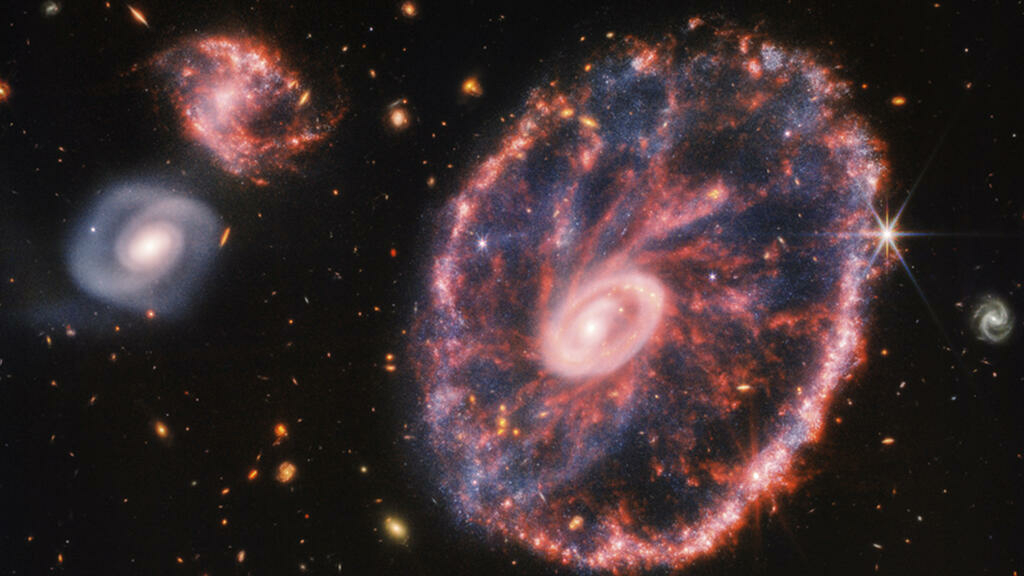First modification:
A new installment of the modern space viewer has yielded never-before-seen photos of the peculiar galaxy, its star formation and black holes. Thanks to her infrared gaze, Webb was able to achieve a level of sharpness that the Hubble telescope had not achieved because of the coating of dust surrounding the circular system. NASA warned that it will also delve into the past and future of the ‘Cartwheel’.
Scientific advancement continues thanks to the precision of the James Webb Space Telescope for the high quality of its images. In this installment, its potential revealed the chaos that makes up the Cartwheel galaxy, its star formation and its black holes.
This constellation had been detected by Hubble, but its details were a mystery since the dust that covered the stars did not allow optimal viewing. However, by Webb’s infrared sighting system, it could be elucidated.
The snapshots showed Cartwheel and two other smaller galaxies that accompany it against a backdrop of many other galaxies.
Communications from the American NASA and the European Space Agency (ESA) reported that it also revealed the behavior of the black hole within the galactic center and shows how it has changed over billions of years.
‘Cartwheel’, by its English name, is located 500 million light years away in the Sculptor constellation and has unusual vision. Its appearance is the result of an intense and peculiar event, such as a high-speed collision between a large spiral galaxy and a smaller one, which cannot be seen in this image.
These galactic collisions always generate a string of different, smaller events. In this specific case, it affected the shape and structure of the galaxy.
Its composition comprises two rings – a bright inner one, a colored surrounding one – that expand outwards from the center of the collision, like the ripples of water after a stone is thrown.
“A Ring Galaxy”
Due to these characteristics, astronomers called it “a ring galaxy”, a less frequent type of structure than, for example, that of spirals, such as the one that the Milky Way has.
In addition, Cartwheel has a bright core that contains a vast amount of hot dust, and the bright areas are large fields of young stars.
While the outer ring, which has been expanding for about 440 million years, is dominated by star formation and supernovae. The displacement of this ring allows the surrounding gas to leak out and stars to be born.
This image of the Webb emphasizes that Cartwheel is “in a very transitory stage” and that it will continue to transform over time.
NASA and ESA have reported that, beyond the snapshot Webb obtained, it will also be able to determine a view of past events in the galaxy and how it may evolve in the future.
with EFE





![[Img #74675]](https://thelatestnews.world/wp-content/uploads/2024/12/They-discover-a-new-class-of-X-ray-sources-in-the-150x150.jpg)








Add Comment